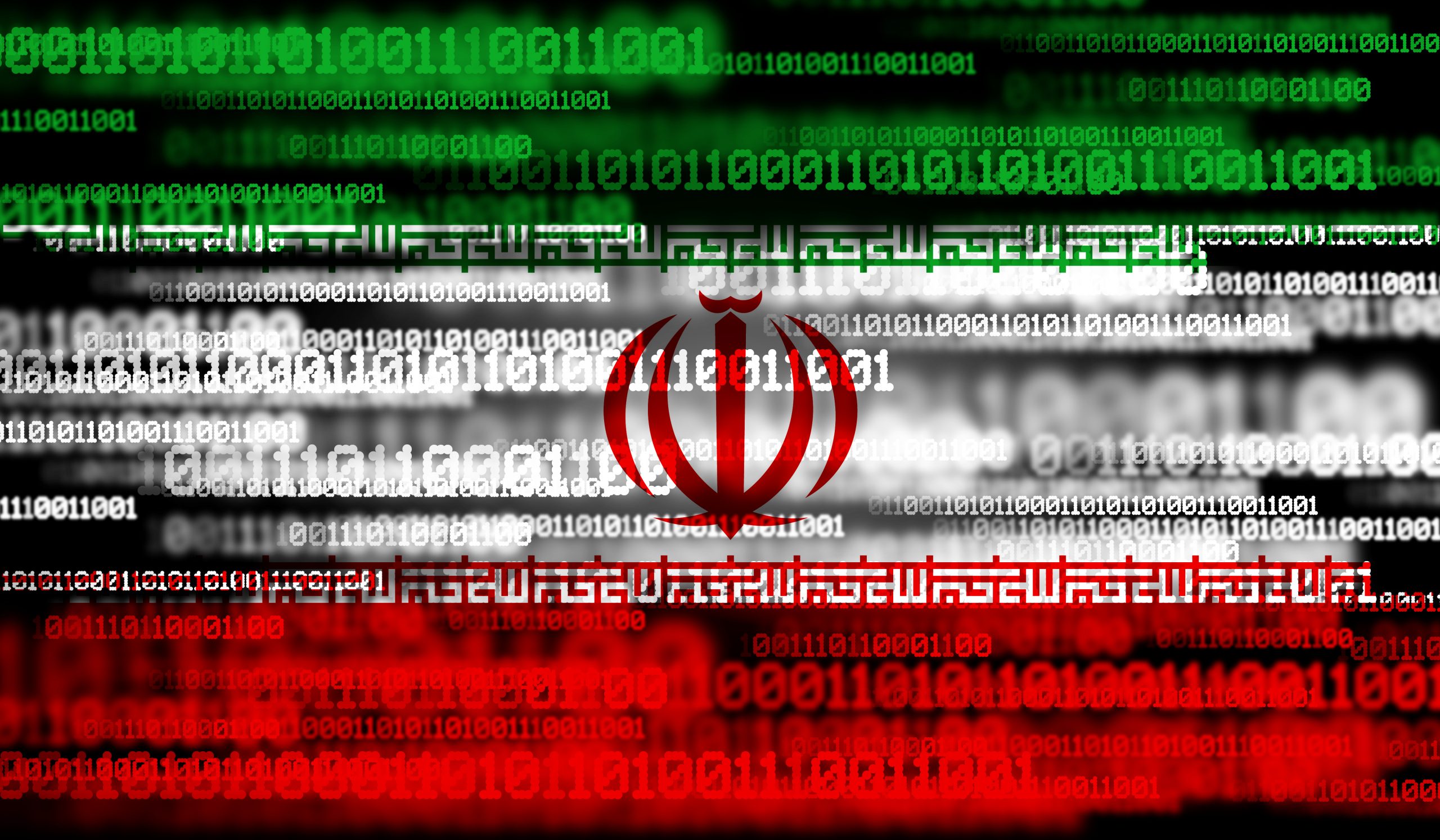 1 | Introduction: From Fordow Craters to Corporate Fire Drills
1 | Introduction: From Fordow Craters to Corporate Fire Drills
At 02:15 a.m. on 22 June 2025, four B-2 bombers bored 30-000-lb Massive Ordnance Penetrators through the mountain above Iran’s Fordow enrichment plant while U.S. destroyers loosed Tomahawks at Natanz and Isfahan. By sunrise on the U.S. East Coast, the simmering Israel-Iran shadow war had morphed into open, three-nation conflict.
Iran’s leadership vowed retaliation “in every domain,” yet geography blocks Tehran’s missiles from reaching American soil. The nation’s most potent long-range weapon remains the same one it has refined for more than a decade: cyber power. From 2012’s Operation Ababil DDoS floods to 2022’s Albania border-wipe, Iran has proven it can disrupt, destroy, and demoralize adversaries thousands of miles away—at a fraction of the cost of kinetic warfare.
For U.S. businesses, this means the front line now runs through data centers, refinery control rooms, hospital networks, and SaaS clouds. Cybersecurity is no longer a compliance checkbox; it is a survival discipline. The good news: companies that act with wartime urgency can blunt Iran’s playbook, protect shareholders, and even turn robust security into competitive advantage.
2 | Why Iran Fights With Keyboards, Not ICBMs

-
Reach on a Budget: A phishing email reaches Wall Street in milliseconds; building an intercontinental missile program costs billions and years of flight tests.
-
Plausible Deniability: Tehran cloaks state ops behind hacktivist fronts such as Homeland Justice, muddying attribution and complicating U.S. response.
-
Psychological Punch: Disabling a Gulf-Coast LNG terminal or wiping a hospital’s EMR system generates televised panic that missiles rarely achieve.
-
Sanctions Pressure Valve: Cyber theft of intellectual property and hard currency ransomware help offset economic isolation.
-
Strategic Symmetry: Iran cannot match U.S. air power, but it can impose similar pain by crashing critical infrastructure—without crossing oceans.
Bottom line: Iranian doctrine treats cyber operations as cost-effective coercion. Any escalatory step in the kinetic arena is certain to echo in cyberspace.
3 | Iran’s Digital War Diary (2012-2025)
| Year | Operation | Target & Impact | Lesson for U.S. Firms |
|---|---|---|---|
| 2012-13 | Operation Ababil | Record DDoS barrages knocked JPMorgan, Wells Fargo, Bank of America offline for hours, costing ≈ $400 M in mitigation. | Financial giants are prime pressure points; volumetric attacks remain cheap and effective. |
| Aug 2012 | Shamoon v1 | 30 000 Saudi Aramco PCs wiped; company reverted to typewriters for a week. | Iran embraces destructive, not just disruptive, malware. |
| 2016 / 2018 | Shamoon v2/v3 | Variants hit UAE shipping and Italian energy firms. | Code reuse is standard; regional allies of the U.S. are fair game. |
| 2017 | Triton/Trisis | Malware disabled Triconex safety systems in a Saudi petro-chem plant, risking explosion. | OT safety layers are targets, not off-limits. |
| 2019-21 | APT33 Aerospace Phish | Fake job ads dropped DropShot wipers on Boeing & Lockheed. | Spear-phishing plus wipers is a preferred combo. |
| 2022 | Albania Gov Wipe | Border-control servers erased after diplomatic spat; NATO territory breached. | Tehran will hit NATO members to signal resolve. |
| 2023-24 | APT42 Healthcare Raids | Pulse Secure exploits enabled double-extortion ransomware on U.S. hospital chains. | Life-and-death sectors carry maximum leverage. |
| 2025 YTD | Cloud Token Theft | OilRig hijacked OAuth tokens at a major U.S. data-center operator. | Cloud supply-chain hijacks scale nation-state reach. |
4 | Tehran’s Cyber Army: Who’s Behind the Keyboards in 2025?
-
APT 33 “Elfin” – Aerospace & energy focus; now compiling Rust wipers that bypass EDR via vulnerable drivers.
-
APT 34 “OilRig” – Cloud-credential maestro; lives off Microsoft Graph, weaponizes dormant API tokens.
-
APT 42 – Targets NGOs, healthcare, academia; blends classic phishing with Android spyware and double-extortion ransomware.
-
“Homeland Justice” – Telegram-based hacktivist front; crowdsources DDoS and data leaks to enable plausible deniability.
Shared infrastructure, pooled zero-days, and overlapping developer handles suggest a central procurement pipeline run by the IRGC’s Cyber-Electronic Command.
5 | Tactics & Techniques to Expect This Year

-
Password-Spray & MFA Fatigue: Low-and-slow attempts against O365, Okta, Duo; expect SIM-swap attacks on SMS 2FA.
-
Edge-Device Exploits: Ivanti, Fortinet, Palo Alto SSL-VPN pre-auth RCE remains Tehran’s go-to door-buster.
-
Supply-Chain Hijacks: Compromised CI/CD pipelines poison thousands of downstream binaries in one swoop.
-
Living-Off-The-Land in OT: Legit engineering software flips valves and pumps without bespoke malware.
-
Triple-Extortion Wiper-Ransom: Encrypt → exfiltrate → overwrite master boot records, maximizing chaos.
-
AI Deepfakes & Disinformation: Fabricated videos of U.S. leaders aim to tank markets or sow public panic.
6 | Twelve High-Exposure U.S. Sectors—And the Flagship Firms on the Front Line
| # | Sector | Why It’s Attractive | Example Companies |
|---|---|---|---|
| 1 | Energy & Utilities | Legacy SCADA, hurricane-season leverage | Chevron, ExxonMobil, Colonial Pipeline |
| 2 | Financial Services | Immediate economic impact, rich data | JPMorgan, Citigroup, Wells Fargo |
| 3 | Healthcare & Public Health | $9 000/min downtime; life-safety stakes | UnitedHealth, HCA, Mayo Clinic |
| 4 | Transportation & Logistics | XP-era crane HMIs; supply-chain choke points | Port of LA, FedEx, UPS |
| 5 | Technology & Cloud | One breach cascades to millions | AWS, Microsoft Azure, Google Cloud |
| 6 | Defense Industrial Base | Direct Israeli ties; valuable IP | Lockheed Martin, RTX, Northrop Grumman |
| 7 | Manufacturing & ICS Vendors | PLC firmware lag; Triton proof-of-concept | Schneider Electric, Rockwell |
| 8 | Telecom & Media | Disinfo amplification; BGP hijack potential | AT&T, Verizon, Comcast |
| 9 | Food & Agriculture | Cold-storage OT; public confidence | Tyson Foods, Archer Daniels Midland |
| 10 | Water & Wastewater | Decentralized, underfunded, life-critical | Regional water utilities |
| 11 | Education | Massive PII troves; weak budgets | University hospital systems |
| 12 | State & Local Gov | Election infrastructure, 911 CAD | County governments, election boards |
7 | Five Plausible Attack Scenarios for Summer 2025
| Scenario | Likely Tactic | Business Impact | Probability (90-day) |
|---|---|---|---|
| Gulf-Coast LNG terminal wiper | OT workstation foothold → PLC sabotage | $3–5 B loss; 1 M bpd supply shortfall | Medium |
| Tri-state hospital ransomware | Vendor spear-phish → Pulse Secure exploit | Surgery cancellations; patient diversion | High |
| Defense contractor cloud breach | OAuth token theft via fake recruiter | Hypersonic IP leak; contract delays | High |
| Deepfake POTUS video | AI + botnet media blitz | Flash crash; public panic | Medium |
| Port of LA crane lockdown | Unpatched HMI exploit | $1 B per-week supply drag | Low-Med |
8 | The 72-Hour Stabilization Checklist
-
Invoke “Shields Ready.” Assume every edge device is hostile until patched.
-
Mandate Hardware MFA. FIDO2 keys for all privileged and remote accounts.
-
Scan the Attack Surface. Patch or virtually patch any CVE on internet-facing gear.
-
Snapshot Critical Data Offline. Air-gap gold images of servers, PLC configs, and databases.
-
Enable Real-Time Threat Feeds. Pipe CISA, ISAC, and commercial CTI into SIEM/SOAR and auto-block.
-
Lock Down Third-Party Access. Disable unused vendor accounts; enforce least-privilege for the rest.
9 | The 30-Day Hardening Sprint
| Goal | Key Tasks | Success Metric |
|---|---|---|
| Zero-Trust Access | Deploy identity-aware proxy; force SSO & least privilege. | 100 % of internal web apps behind SSO. |
| OT/IT Segmentation | Install data diodes or ACL firewalls, monitor with passive sensors. | No routable path from corp IT to PLC VLANs. |
| Incident Response Readiness | Tabletop a Triton-style OT shutdown & triple-extortion ransomware. | IR team meets RTO/RPO targets in exercise. |
| Backup Immunity | Immutable, air-gapped copies via WORM or S3 Object Lock. | Successful restore drill of gold image. |
| Logging & Detection | Route logs to SIEM/SOAR; enable UEBA; map to MITRE. | ≥ 90 % log sources parsed and alerting. |
10 | The 100-Day Cyber-Resilience Roadmap

-
Supply-Chain Assurance – Tier suppliers, demand SBOMs, enforce 24-hour patch SLAs.
-
Cyber-Physical Continuity – Develop manual runbooks for PLCs, BMS, and safety controllers; stage spare kits.
-
Identity Hygiene Automation – Auto-deprovision dormant accounts > 30 days; rotate service secrets.
-
AI-Age Crisis Comms – Pre-record signed executive videos to debunk deepfakes.
-
Financial Preparedness – Re-negotiate cyber-insurance to cover nation-state incidents; set aside a 10 % surge budget for DFIR and PR.
11 | Sector-Specific Survival Guides
11.1 Energy & Utilities
-
Deploy passive ICS monitoring that understands Modbus/DNP3.
-
Conduct quarterly “dark-site” drills—manual ops for four hours.
-
Sync with regional fusion centers for grid-restoration priority.
11.2 Healthcare
-
Segment IoMT devices off EMR and billing VLANs.
-
Stage paper-chart workflows for admissions.
-
Mirror EHR databases hourly to a separate cloud region.
11.3 Financial Services
-
Geo-filter API gateways; rate-limit to blunt DDoS.
-
Add circuit breakers for algorithmic trading fed by external data.
-
War-game “liquidity under attack” with treasury, payments, and PR.
11.4 Technology & Cloud Providers
-
Hunt continuously for abused service-principal tokens.
-
Offer customer-managed keys or confidential compute tiers.
-
Auto-publish SBOMs for every new service release.
11.5 SMEs & Local Government
-
Tap free CISA Cyber Hygiene scans and Protective DNS.
-
Use MDR/SOC-as-a-Service instead of building 24×7 teams.
-
Join MS-ISAC for threat intel and incident-response funding.
12 | Incident Response Playbook
-
Detect & Triage – Fusion cell updates every 60 min; severities assigned in 15 min.
-
Contain – Auto-isolate infected hosts; pull break-glass secrets; block east-west traffic.
-
Eradicate & Recover – Scrub artifacts; rotate keys; rebuild from signed images; restore data.
-
After-Action & Hardening – Within seven days, document root cause, map to MITRE, patch backlog, brief board.
Measure success in minutes of downtime averted—not tickets closed.
13 | Board Engagement & Budgeting
-
Add a cyber scorecard to every quarterly agenda: heat-map risks vs. NIST CSF outcomes.
-
Create a contingency fund (1–2 % of EBIT) for rapid DFIR, legal, and crisis PR.
-
Tie senior-management bonuses to MTTD and MTTR thresholds.
-
Mandate at least one C-level exec participate in every tabletop exercise.
14 | Legal & Regulatory Cross-Checks
-
SEC Cyber-Disclosure Rule: Define “material” now for four-day 8-K filings.
-
OFAC Sanctions: Build a “no-pay” ransomware stance unless legal counsel approves.
-
CIRCIA Prep: Map incident-report flows—the 72-hour clock starts when the final rule lands.
-
State Mandates: NY DFS breach notice in 24 h; California flags repeat OT failures as negligence.
15 | Future-Proofing: From Crisis Reaction to Sustainable Resilience
-
Secure-by-Design: Embed threat modeling into SDLC gate reviews.
-
Automation & AI: Use SOAR playbooks for auto-containment; reserve humans for high-context decisions.
-
Cyber-Physical Fusion Teams: Pair SOC analysts with OT engineers; every alert gets a safety lens.
-
Continuous Improvement: Each quarter, elevate two NIST CSF functions from “Repeatable” to “Adaptive.”
16 | Conclusion: Cybersecurity Is Now a Core Business KPI
Fordow’s tunnels may still smolder, but Iran’s opening cyber salvos are already probing America’s digital walls. Companies that treat cybersecurity like life-safety equipment—maintained, tested, and funded before disaster—will ride out Tehran’s backlash. Those that delay may discover that the next bomb to drop is a ransom note blinking on every screen.
Ready your shields, test your backups, rehearse your teams—and leave no patch, password, or playbook for tomorrow.


